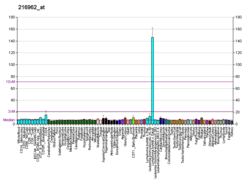| RPAIN | |||||||||||||||||||||||||||||||||||||||||||||||||||
|---|---|---|---|---|---|---|---|---|---|---|---|---|---|---|---|---|---|---|---|---|---|---|---|---|---|---|---|---|---|---|---|---|---|---|---|---|---|---|---|---|---|---|---|---|---|---|---|---|---|---|---|
| Identifiers | |||||||||||||||||||||||||||||||||||||||||||||||||||
| Aliases | RPAIN, HRIP, RIP, RPA interacting protein | ||||||||||||||||||||||||||||||||||||||||||||||||||
| External IDs | OMIM: 617299; MGI: 1916973; HomoloGene: 13006; GeneCards: RPAIN; OMA:RPAIN - orthologs | ||||||||||||||||||||||||||||||||||||||||||||||||||
| |||||||||||||||||||||||||||||||||||||||||||||||||||
| |||||||||||||||||||||||||||||||||||||||||||||||||||
| |||||||||||||||||||||||||||||||||||||||||||||||||||
| |||||||||||||||||||||||||||||||||||||||||||||||||||
| |||||||||||||||||||||||||||||||||||||||||||||||||||
| Wikidata | |||||||||||||||||||||||||||||||||||||||||||||||||||
| |||||||||||||||||||||||||||||||||||||||||||||||||||
RPA-interacting protein is a protein that in humans is encoded by the RPAIN gene.
See also
- Replication protein A (RPA)
References
- ^ GRCh38: Ensembl release 89: ENSG00000129197 – Ensembl, May 2017
- ^ GRCm38: Ensembl release 89: ENSMUSG00000018449 – Ensembl, May 2017
- "Human PubMed Reference:". National Center for Biotechnology Information, U.S. National Library of Medicine.
- "Mouse PubMed Reference:". National Center for Biotechnology Information, U.S. National Library of Medicine.
- Park J, Seo T, Kim H, Choe J (Sep 2005). "Sumoylation of the novel protein hRIP{beta} is involved in replication protein A deposition in PML nuclear bodies". Mol Cell Biol. 25 (18): 8202–14. doi:10.1128/MCB.25.18.8202-8214.2005. PMC 1234305. PMID 16135809.
- Chen JZ, Huang SD, Ji CN, Pang RY, Xie Y, Xue JL (Jul 2005). "Identification, expression pattern, and subcellular location of human RIP isoforms". DNA Cell Biol. 24 (7): 464–9. doi:10.1089/dna.2005.24.464. PMID 16008515.
- "Entrez Gene: RPAIN RPA interacting protein".
Further reading
- Blonska M, You Y, Geleziunas R, Lin X (2004). "Restoration of NF-kappaB activation by tumor necrosis factor alpha receptor complex-targeted MEKK3 in receptor-interacting protein-deficient cells". Mol. Cell. Biol. 24 (24): 10757–65. doi:10.1128/MCB.24.24.10757-10765.2004. PMC 533972. PMID 15572679.
- Gerhard DS, Wagner L, Feingold EA, et al. (2004). "The status, quality, and expansion of the NIH full-length cDNA project: the Mammalian Gene Collection (MGC)". Genome Res. 14 (10B): 2121–7. doi:10.1101/gr.2596504. PMC 528928. PMID 15489334.
- Ota T, Suzuki Y, Nishikawa T, et al. (2004). "Complete sequencing and characterization of 21,243 full-length human cDNAs". Nat. Genet. 36 (1): 40–5. doi:10.1038/ng1285. PMID 14702039.
- Strausberg RL, Feingold EA, Grouse LH, et al. (2003). "Generation and initial analysis of more than 15,000 full-length human and mouse cDNA sequences". Proc. Natl. Acad. Sci. U.S.A. 99 (26): 16899–903. Bibcode:2002PNAS...9916899M. doi:10.1073/pnas.242603899. PMC 139241. PMID 12477932.
- Suzuki Y, Yoshitomo-Nakagawa K, Maruyama K, et al. (1997). "Construction and characterization of a full length-enriched and a 5'-end-enriched cDNA library". Gene. 200 (1–2): 149–56. doi:10.1016/S0378-1119(97)00411-3. PMID 9373149.
- Maruyama K, Sugano S (1994). "Oligo-capping: a simple method to replace the cap structure of eukaryotic mRNAs with oligoribonucleotides". Gene. 138 (1–2): 171–4. doi:10.1016/0378-1119(94)90802-8. PMID 8125298.
This article on a gene on human chromosome 17 is a stub. You can help Misplaced Pages by expanding it. |




